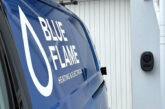
As e-mobility demand increases year-on-year, a corresponding requirement is placed on supporting infrastructure, primarily the charging point. Protecting the charging points against adverse weather or impact damage is vital to maintaining safe and reliable charging, which puts enclosures at centre stage.
Chris Lloyd, Managing Director at Spelsberg, explains the key drivers behind e-mobility enclosure design.
In 2020 more than 10% of all UK car registrations comprised of electric vehicles (EV). The gathering pace of EV sales is of little surprise and is set to increase; one reason being the closing proximity of the UK’s deadline on the ban of combustion engine car sales, brought forward from 2040 to 2035.
Concerning public transport, between 2020 and 2024 the electric bus market is expected to grow at a rate of nearly 50%. The e-mobility sector is of course also joined today by e-bicycles. In the Netherlands, albeit with a strong history of participation in cycling, over 50% of all adult bikes sold in 2018 were electric. According to a recent report, it’s predicted that by 2023 the number of e-bikes, including those privately owned and publicly shared, will reach over 300 million, a 50% increase over 2019’s figures.
The growth in EVs means a corresponding requirement for growth in charging points. To meet demand, as of January the UK had over 30,000 publicly available electric vehicle charging points across nearly 14,000 locations. Charging points include electrical distribution, the interface between the vehicle and the power grid, which is as crucial to an EV as its battery. To achieve safe, reliable charging whatever the conditions, a robust enclosure has to provide protection to the electrical distribution unit while ensuring safe operation to users and the wider electrical circuit.
Working with leading car manufacturers, Spelsberg developed bespoke enclosures to ensure safe, secure and easy to use vehicle charging, from domestic applications through to semi-public installations, such as car parks. Each project is characterised by a unique specification which depends upon the design of the power supply distribution circuit and components, and all meet the required standards, including VDE and UL.
Spelsberg enclosures tailored for e-mobility charging are designed to bespoke required dimensions for the location, which could range from a car park charging pillar to a distribution board for a garage or car port. Consideration of the installation’s location and the number of charging points is also combined with climatic conditions, which could require total resistance to heavy rain, snow and freezing temperatures, through to high heat and even fire protection. Spelsberg has been presented with an extremely wide variety of EV charging point requirements from around the world and, as a result, we’ve designed, manufactured, tested and assembled a wide range of enclosures to meet these needs.
For example, the AK E-Mobility enclosure is ideal for replacement or expansion of the existing distribution unit for the secure protection of electric car charging points, typically found in a domestic garage or car port. This removes the time required for redesign of the existing distribution system and provides short switch-off times. Safety is a crucial aspect and the AK E-mobility distribution enclosure is ready-supplied with an integrated end current circuit, protected by an integrated residual current circuit breaker and a separate miniature circuit breaker, according to IEC 60364-7-722. The integrated ventilation design also avoids condensate water inside the enclosure, which could damage the electrics.
To safely house and protect EV charging point power supply, the modular GTi low voltage switchgear enclosures can be pre-fabricated and integrated with short switch-off times. The robust, polycarbonate design protects against UV and harsh weather conditions and secures against dust ingress without corrosion. They’re easy to fit which means simple and safe extension of the existing switchgear.
Despite their smaller size, chargers supplied with e-bikes are generally for home use where it is assumed they will be less exposed to heavy use or inclement weather. However, there is a growing demand for publicly and commercially located e-bike charging points. The BCS 2.0 e-bike charging station is based on Spelsberg’s GEOS industrial enclosure, designed for outdoor use to provide protection under any weather condition. Able to safely house e-bike charging circuits and components, the BCS 2.0 also includes an LED display and with WLAN connectivity, a web portal provides a range of analytics for easy usage, diagnostics and maintenance information. E-cyclists can also download an app to quickly identify their nearest bike charging station.
As the rate of electric vehicle growth continues to increase, so does the dependence on charging points. Safe, secure protection of charging point electrical distribution and components are paramount to support EV growth. Wherever the installation is located, Spelsberg is providing a tailored enclosure.
View Spelsberg’s range of E-Bike charging stations here.








